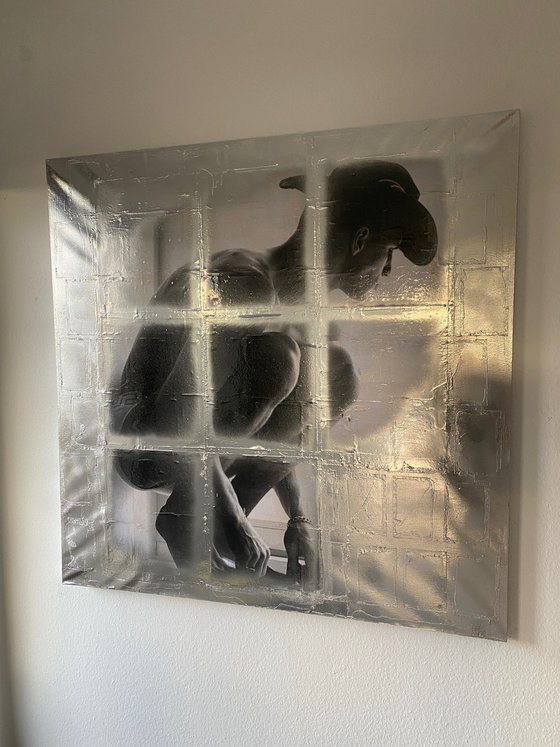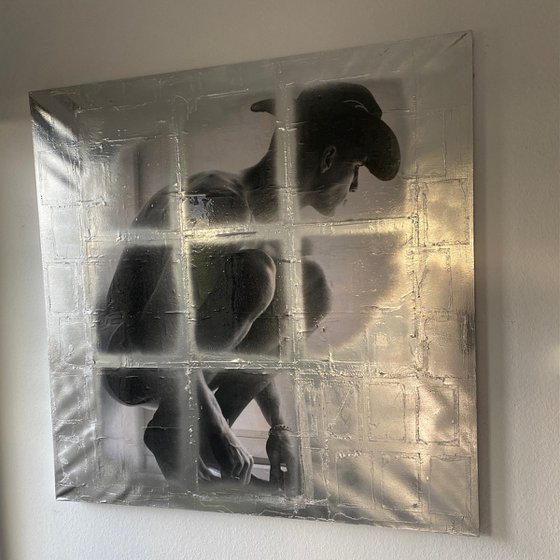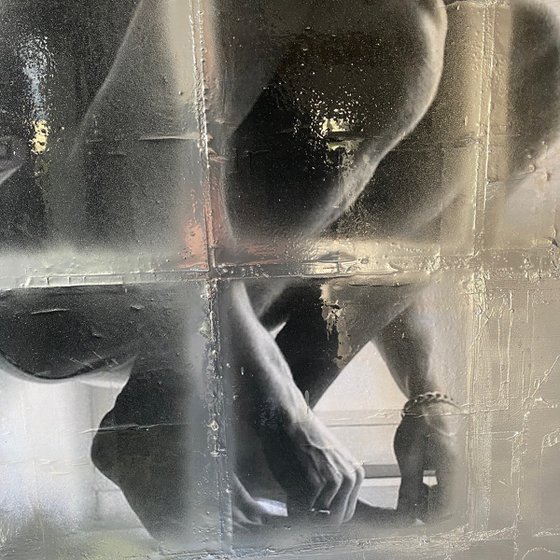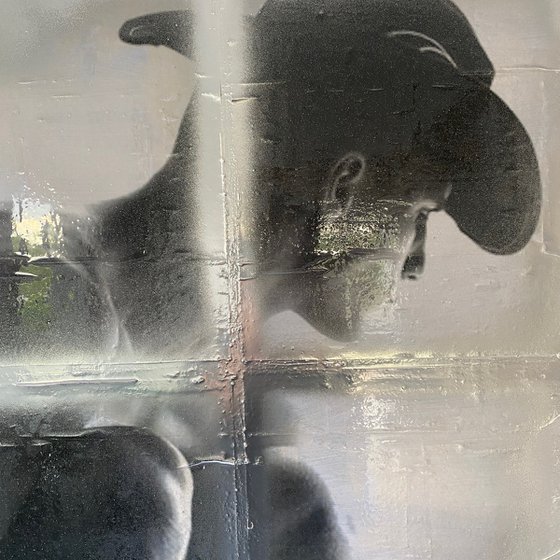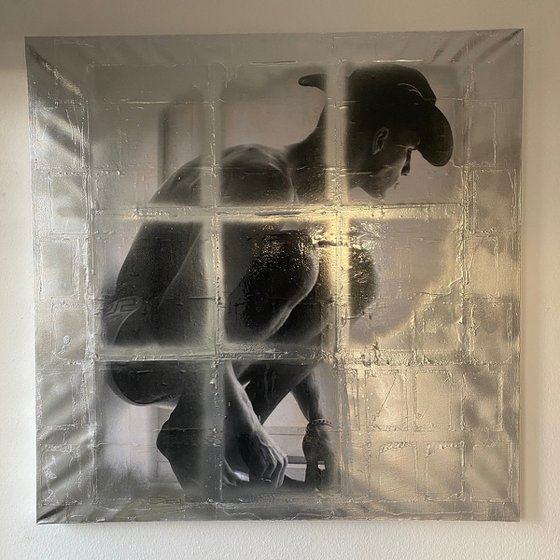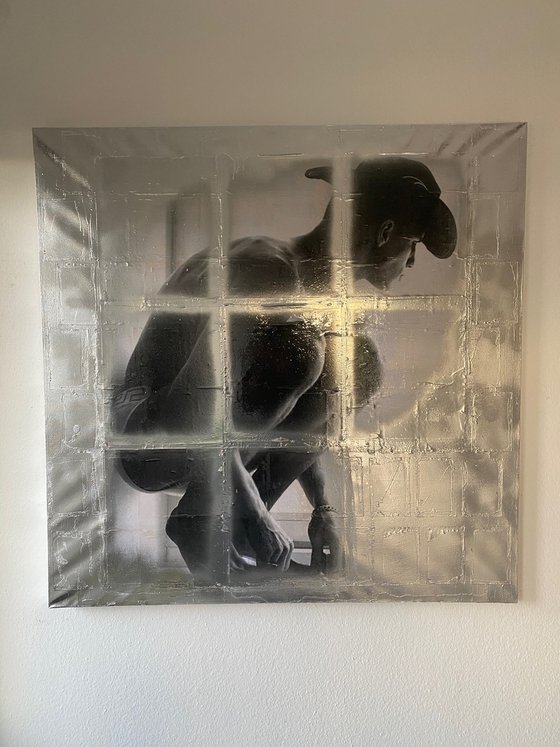Main Navigation
Original artwork description:
In “Augusta Cowboy Birdy 2,” a 120x120 cm canvas collage by German-French artist Jerome Cholet, intimacy and confinement collide in a compelling, near-cinematic frame. Composed of a single black-and-white photograph meticulously fragmented and overlaid with silver spray paint, the piece operates like a memory caught in both amber and ice. The cowboy, nude and crouched in a contemplative posture, evokes an arresting vulnerability. His hat, the lone marker of his identity or myth, does nothing to obscure his humanness—only to heighten its contrast against the cold, reflective grid that overlays him.
Cholet’s process—manipulating photography with the tactile violence of paint—suggests both preservation and erasure. The silvered surface, textured to resemble frost or perhaps industrial decay, speaks of isolation and entrapment, reinforcing the illusion that the subject is behind glass, encased like a relic or specimen. Yet the body, muscular and organic, pulses against this hard geometry, reminding us that the human form, no matter how stylized or iconic, resists full containment.
There’s a powerful tension here between eroticism and detachment, exposure and distance. Cholet does not simply aestheticize the male form—he interrogates it, abstracts it, breaks it into quadrants, as if to challenge our impulse to look cleanly, or to see wholly. This is a portrait not just of a man, but of the act of viewing itself—fractured, filtered, and always mediated.
Materials used:
photo, spray paint
Tags:
#art #lgbt #gay art #lonleyness #art & #cowboy bebop #collage aceo #collage background #solitude graceAugusta Cowboy Window (2025) Mixed-media painting
by Jerome Cholet
8 Artist Reviews
£348.29
- Mixed-media painting on Canvas
- One of a kind artwork
- Size: 120 x 120 x 3cm (unframed)
- Signed on the back
- Style: Unspecified
- Subject: People and portraits
Loading
Original artwork description
In “Augusta Cowboy Birdy 2,” a 120x120 cm canvas collage by German-French artist Jerome Cholet, intimacy and confinement collide in a compelling, near-cinematic frame. Composed of a single black-and-white photograph meticulously fragmented and overlaid with silver spray paint, the piece operates like a memory caught in both amber and ice. The cowboy, nude and crouched in a contemplative posture, evokes an arresting vulnerability. His hat, the lone marker of his identity or myth, does nothing to obscure his humanness—only to heighten its contrast against the cold, reflective grid that overlays him.
Cholet’s process—manipulating photography with the tactile violence of paint—suggests both preservation and erasure. The silvered surface, textured to resemble frost or perhaps industrial decay, speaks of isolation and entrapment, reinforcing the illusion that the subject is behind glass, encased like a relic or specimen. Yet the body, muscular and organic, pulses against this hard geometry, reminding us that the human form, no matter how stylized or iconic, resists full containment.
There’s a powerful tension here between eroticism and detachment, exposure and distance. Cholet does not simply aestheticize the male form—he interrogates it, abstracts it, breaks it into quadrants, as if to challenge our impulse to look cleanly, or to see wholly. This is a portrait not just of a man, but of the act of viewing itself—fractured, filtered, and always mediated.
Materials used:
photo, spray paint
Tags:
#art #lgbt #gay art #lonleyness #art & #cowboy bebop #collage aceo #collage background #solitude grace14 day money back guaranteeLearn more

